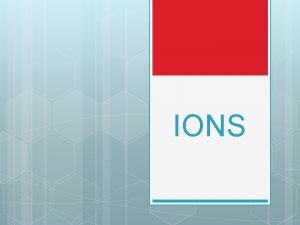What Weve Learned So Far A Review of









- Slides: 9

What We’ve Learned So Far A Review of Topics on Test 2

What Have We Learned About Optical and Electric Storage? v v Laser light is focused through a (circular) lens onto the surface of a CD The central max of the diffraction pattern must be no larger than one bit if data is to be resolved d sin q = 1. 22 l tan q = y/D v v Capacitors store charge Q in proportion to the voltage V between the plates: C = Q/V = e 0 A/d Capacitors are used in RAM

What Have We Learned About Magnetic Storage? v v v Two domains magnetized in same direction is a 0 Two domains magnetized in opposite directions is a 1 Direction of magnetization changes at start of new bit. Magnetic data is written by running a current through a loop of wire near the disk As magnetic data passes by coil of wire, changing field induces currents according to Faraday’s Law:

What Have We Learned About Magnetoresistance? v v Charges traveling through magnetic field experience magnetic force (provided velocity and field are not aligned): FB = qv x B In a current-carrying wire, this force results in more frequent collisions and thus an increased resistance: Magnetoresistance Electrons traveling through magnetized material undergo spin-dependent scattering When magnetic field is present in magnetic superlattice, scattering of electrons is cut dramatically, greatly decreasing resistance: Giant magnetoresistanced

What Have We Learned About Atoms? v v v ENERGY IS QUANTIZED Electrons can absorb energy and move to a higher level; they can emit light and move to a lower level In hydrogen the emitted light will have energy E = (13. 6 ev)(1/nf 2 – 1/ ni 2) The wavelength is given by l = hc/E = 1240(nm e. V)/E Energy levels of nearby atoms are slightly shifted from each other, producing bands of allowed energies Electrons move from the locality of one atom to the next only if an energy state is available within the same band

What have we learned about Resistance? v v v In many, ohmic, materials, current is proportional to voltage: V = i. R Resistance is proportional to the length of an object and inversely proportional to crosssectional area: R = r. L/A The constant of proportionality here is called the resistivity. It is a function of material and temperature.

What Have We Learned About Solids? v v In conductors, the valence band is only partially-full, so electrons can easily move In semiconductors and insulators, the valence band is completely full, so electrons must gain extra energy to move v v Conductors have a partially-filled valence band v v semiconductors have smaller band gap, insulators have larger band gap The primary effect of higher temperature on resistance is to increase R due to more collisions at higher temperatures Semiconductors have a completely-filled valence band v The primary effect of temperature on resistance is due to this requirement: the higher the temperature, the more conduction electrons

What Have We Learned About Semiconductors? v v Can dope semiconductors to increase conductivity: p-type uses atoms with 3 valence electrons, so empty “hole”, ntype uses atoms with 5 valence electrons, so extra conduction electron In p-n junction, conduction electrons travel from n side (and holes travel from p side) to p (n) side to combine with holes (electrons) v v v p-side becomes negatively charged; n-side becomes positively charged: potential difference If put negative terminal on p-side, increases potential difference and get no current (reverse bias) If put positive terminal on p-side, lower potential difference and get current

What Have We Learned About Semiconductor Devices? v When electrons and holes combine at p-n junction, excess energy emitted as light (LED) v v v energy of light depends on bandgap fairly monochromatic wavelength emitted in all directions Can pump enough electrons to conduction band to achieve population inversion, and could mirror surfaces to encourage stimulated emission: this produces semiconductor laser see applet for more info about laser operation: http: //www. phys. ksu. edu/perg/vqm/laserweb/Ch 3/F 3 s 5 p 1. htm

















